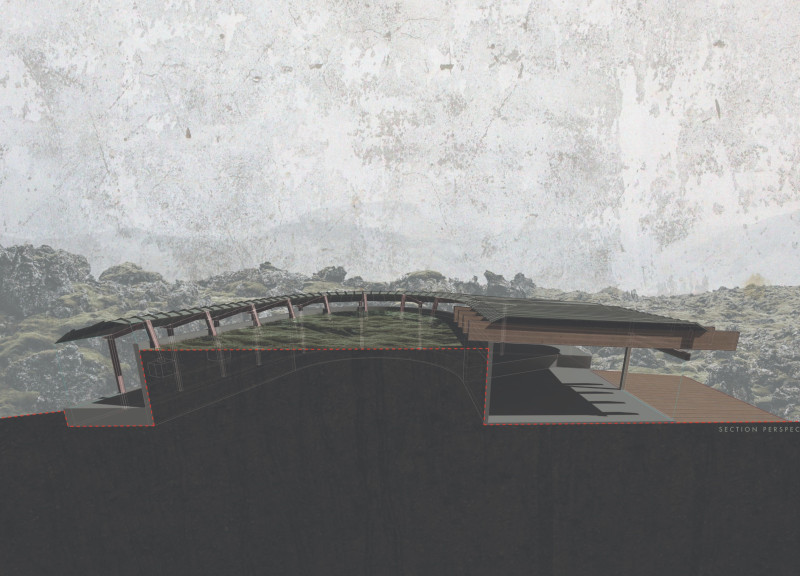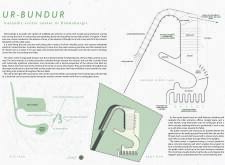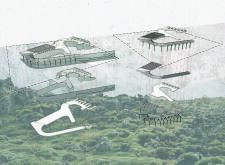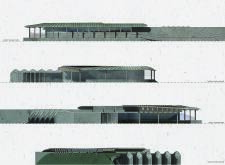5 key facts about this project
The visitor center functions as a hub for tourists exploring the Dimmuborgir lava fields, well-known for their otherworldly formations that have shaped local folklore. The architecture reflects this connection to the landscape, featuring a form that curves and bends, reminiscent of the undulating shapes found in the natural topography around it. This design approach encourages visitors to engage with the environment both visually and physically, making the architecture an integral part of their exploration.
Upon entering Ur-Bundur, guests are guided through a series of well-organized spaces that engage them with the region's volcanic past. The main exhibition room serves as the heart of the building, showcasing interpretative displays that educate visitors about the geological phenomena and cultural narratives associated with the area. This space is intentionally designed to facilitate flow and movement, allowing for various pathways that visitors can take as they discover the exhibition offerings.
Notably, the café section of the center is strategically positioned to provide panoramic views of Hverfjall Volcano and its surrounding lava fields. This space fosters relaxation and social interaction, serving as a place for visitors to rest and reflect on their experiences in the striking landscape. The use of large glass windows in this area not only brings in ample natural light but also creates a seamless visual connection with the outside, inviting the surrounding beauty into the everyday experience of the center.
Material choices in Ur-Bundur reflect a commitment to sustainability and resilience. Concrete, a primary structural material, ensures durability against the harsh Icelandic climate, while treated wood adds warmth to the interior space, creating an inviting atmosphere for visitors. The careful selection of materials fosters a dialogue between the architecture and the natural environment, allowing the visitor center to harmoniously coexist within the landscape.
The project's unique design approaches highlight its commitment to ecological principles and user experience. For instance, the incorporation of passive solar principles through strategic window placements minimizes reliance on artificial heating and lighting, contributing to the overall energy efficiency of the building. Furthermore, by embedding the structure into the landscape, the design respects the integrity of the volcanic topography, encouraging admiration for its natural forms rather than imposing an alien structure on the site.
Overall, Ur-Bundur stands as a thoughtful architectural response to both context and function, aiming to enrich the visitor experience while softly asserting its presence in the Dimmuborgir lava fields. The careful consideration of spatial organization, materiality, and integration with the natural environment all contribute to a visitor center that is both functional and meaningful. To truly appreciate the nuances of this remarkable project, readers are encouraged to explore the architectural plans, sections, and designs, which provide deeper insights into the innovative ideas behind Ur-Bundur. This exploration will reveal how architectural concepts translate into a compelling space that serves the community and engages with Iceland's rich geological heritage.


























